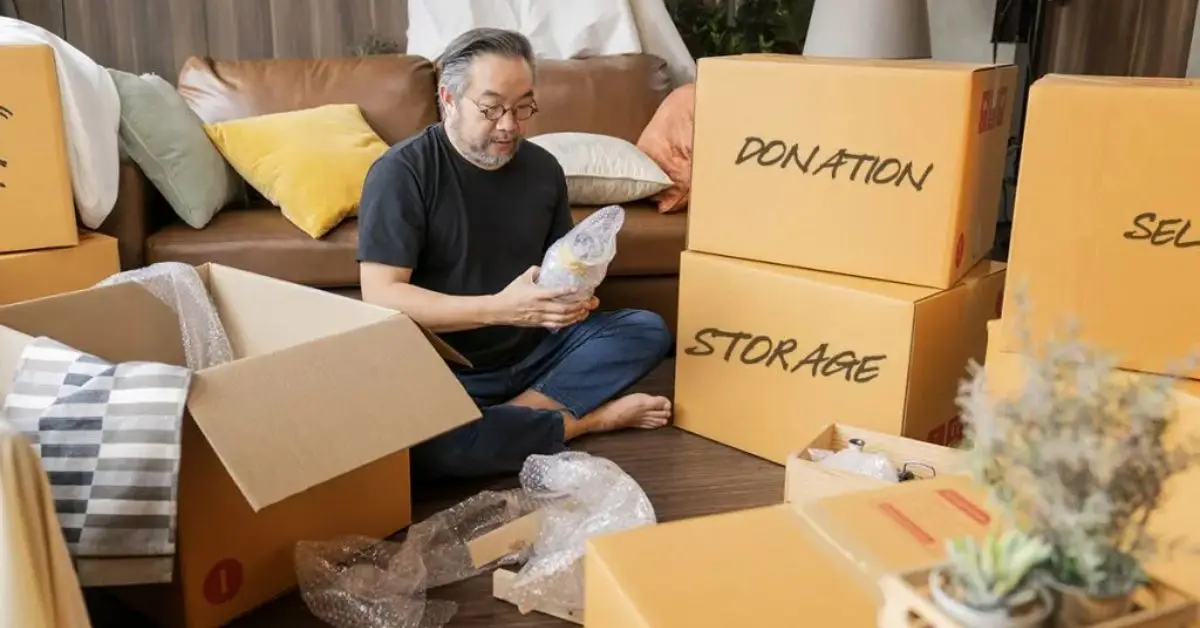How to Create a Decluttering Schedule That Actually Works: 5 Simple Steps to a Tidier Home
I’ve always believed that a tidy home is more than just looking good. It’s about feeling calm and in control.
But honestly, decluttering can feel overwhelming. Where do you even begin? And how do you keep going without losing steam?
That’s when I found the magic of a simple decluttering schedule. It breaks down the chaos into small, doable steps.
If you want a calmer, clutter-free home but don’t know where to start, I’ve got you. I’ll share five easy steps to build a schedule that actually works for you.
Let’s dive in and make your home a place you love coming back to.
Why a Decluttering Schedule Works
Decluttering feels less like a chore when you have a plan. Without a schedule, it’s easy to get stuck, procrastinate, or give up halfway. A schedule breaks your big goal into small, manageable chunks.
This helps you build a habit, not just a one-time blitz. You won’t feel overwhelmed because you know exactly what to do and when. Plus, it gives you little wins along the way, keeping you motivated.
Most importantly, a schedule fits your life — not the other way around. You decide how much time you want to spend and on what areas. This way, decluttering becomes sustainable, not stressful.
Step 1: Assess Your Clutter and Set Realistic Goals
Before you jump in, take a good look around and spot the clutter hotspots in your home. Maybe it’s the kitchen counter, your closet, or that drawer you tend to ignore.

Knowing exactly what needs your attention helps you set clear, manageable goals. Don’t try to declutter your entire home in one go—that’s a quick way to feel overwhelmed.
Start small. As experts suggest, focusing on one area at a time makes the process less daunting and more achievable.
Setting realistic goals keeps you motivated and helps you see real progress without burnout. If you’re looking for smart, stress-free ways to tackle those tricky spaces, check out these 7 genius ways to declutter your attic this summer without losing your mind.
Step 2: Choose Your Decluttering Days and Time Blocks
Once you know where to start, the next key is setting aside specific days and time slots just for decluttering. Treat these like important appointments with yourself.
Even if it’s just 15 or 20 minutes a day, having a routine makes a huge difference. It stops you from procrastinating and keeps the momentum going.
Blocking time in your calendar helps turn decluttering from a one-off chore into a sustainable habit.
Remember, consistency beats intensity. Regular small sessions add up much faster than rare marathon cleanups. To build momentum, try incorporating simple daily habits—like these 5 decluttering tasks minimalists swear by every morning for a tidy home.
Step 3: Break Tasks into Manageable Chunks
Decluttering your whole home at once is overwhelming. Instead, break tasks down into smaller, focused chunks. For example, clear out one drawer, one shelf, or one corner at a time.

This approach makes progress visible and keeps motivation high. It’s like winning little battles that lead to the bigger victory of a tidy home.
Many people on Reddit’s r/declutter community swear by breaking tasks into daily challenges or games, like the Minimalism Game, to keep things fun and social.
Try to keep your chunks realistic—don’t set yourself up for frustration.
If breaking tasks into chunks feels challenging, these 6 easy room-by-room decluttering hacks that work can make the process faster and less overwhelming.
Step 4: Build Accountability Into Your Schedule
It’s easy to lose steam when you’re tackling clutter alone. That’s why building some form of accountability can make a huge difference.
Whether it’s telling a friend about your goals, joining an online group, or even sharing your progress on social media, having someone to check in with keeps you honest and motivated.
As Woman & Home points out, accountability transforms decluttering from a lonely task into a shared journey, making it easier to stick with your schedule.
Don’t underestimate the power of a little support — it can be the push you need on tough days.
Step 5: Create a Clutter Exit Strategy
Decluttering isn’t just about getting rid of stuff once — it’s about stopping clutter from piling up again.
One simple but powerful trick is the “One In, One Out” rule. Every time you bring something new home, commit to removing something old.
Having a clutter exit plan makes your tidy home sustainable in the long run — no more endless cycles of mess and stress.
Common Decluttering Mistakes to Avoid
Avoiding these common pitfalls can make your decluttering journey smoother and more successful:
- Procrastination: Many people delay decluttering because it feels overwhelming. Putting it off only makes the clutter pile up and motivation fade. That’s why setting small, manageable tasks with a clear schedule helps keep you consistent and moving forward.
- Emotional Attachment: We often hold onto items because of sentimental value—old gifts, memories, or “just in case” stuff. But keeping everything can quickly lead to clutter. Ask yourself if the item truly adds value to your life now. If not, letting it go can free up space and your mind.
- Unrealistic Expectations: Expecting to declutter your entire home in one day sets you up for disappointment. Decluttering is a process, not a quick fix. Focus on small wins and steady progress to stay motivated and avoid burnout.
- Trying to Do Too Much at Once: Tackling too many areas or items in one session can be exhausting and frustrating. Breaking tasks into smaller chunks, like a drawer or a shelf at a time, is more effective and keeps your energy up.
- Lack of a Clear Plan: Starting without a plan can leave you confused about where to begin or what to prioritize. Creating a decluttering schedule with realistic goals helps keep you focused and ensures steady progress.
How to Involve Your Family in Decluttering
Decluttering becomes much easier and even enjoyable when the whole family is on board. But getting everyone involved takes a bit of planning and patience.

- Communicate the Why: Start by explaining why decluttering matters—to create a calmer, more organized home where everyone feels comfortable. When family members understand the benefits, they’re more likely to cooperate.
- Set Shared Goals: Involve everyone in setting simple goals. Maybe it’s clearing out toys from the living room or organizing clothes together. When goals feel shared, motivation increases.
- Assign Age-Appropriate Tasks: Give each person tasks that suit their age and ability. Kids can help with sorting toys or choosing what to keep and donate. Teens can tackle their own rooms or help with bigger decluttering projects.
- Make It Fun: Turn decluttering into a game or challenge—like a race to fill donation boxes or timed clean-up sessions. Play music or offer small rewards to keep energy high.
- Respect Boundaries and Feelings: Decluttering can bring up emotions, especially with sentimental items. Be patient and avoid forcing anyone to get rid of things they’re not ready to part with.
- Celebrate Progress Together: Recognize and celebrate small wins as a family. It builds positive momentum and makes everyone feel proud of the tidy space they created together.
Bonus Tips: Keep Going Without Burning Out
Decluttering isn’t a one-time sprint—it’s about creating habits that last. The goal here is to keep going without feeling overwhelmed or burned out.
Try tackling micro-tasks like clearing a drawer or wiping down a counter in just 5 minutes. These small wins add up and keep you motivated. Livingetc and Zen Habits both recommend this bite-sized approach for busy lives.
Another great trick is joining month-long challenges, like the Minimalism Game or weekly decluttering tasks. These keep things fun and give you a sense of progress. You’ll find plenty of support and ideas on Reddit.
Don’t forget seasonal resets! Focus on different areas as the year changes—like closets in August or paperwork in autumn.
What You’ll Gain When You Stick to the Schedule
Sticking to a decluttering schedule does more than just clear your space. It brings real mental benefits too.
You’ll notice less visual chaos, which means improved focus and mental clarity. Simple household routines will run smoother, making daily life easier.
Plus, you’ll feel proud of building a lasting habit. Maintenance becomes simpler, and clutter won’t sneak back in as easily.
Final Thoughts & Encouragement
Remember, decluttering isn’t about perfection—it’s about progress. Building a habit over time will get you further than aiming for a flawless home overnight.
Be flexible with your schedule. Adapt it based on your energy levels and lifestyle. Some days will be easier than others, and that’s okay.
Take moments to reflect on your small wins—they build momentum and keep you moving forward. Celebrate every drawer cleared and every corner tidied.
Your journey to a tidier, calmer home is unique. Keep going—you’ve got this.
If you want more easy tips to keep your home feeling fresh and organized, visit Build Like New. Let’s make decluttering simple together!
Disclaimer: The information provided here is based on research and personal experience but is for general guidance only. Results may vary depending on individual circumstances. Always consult a professional if you have specific concerns about your home or mental health.


